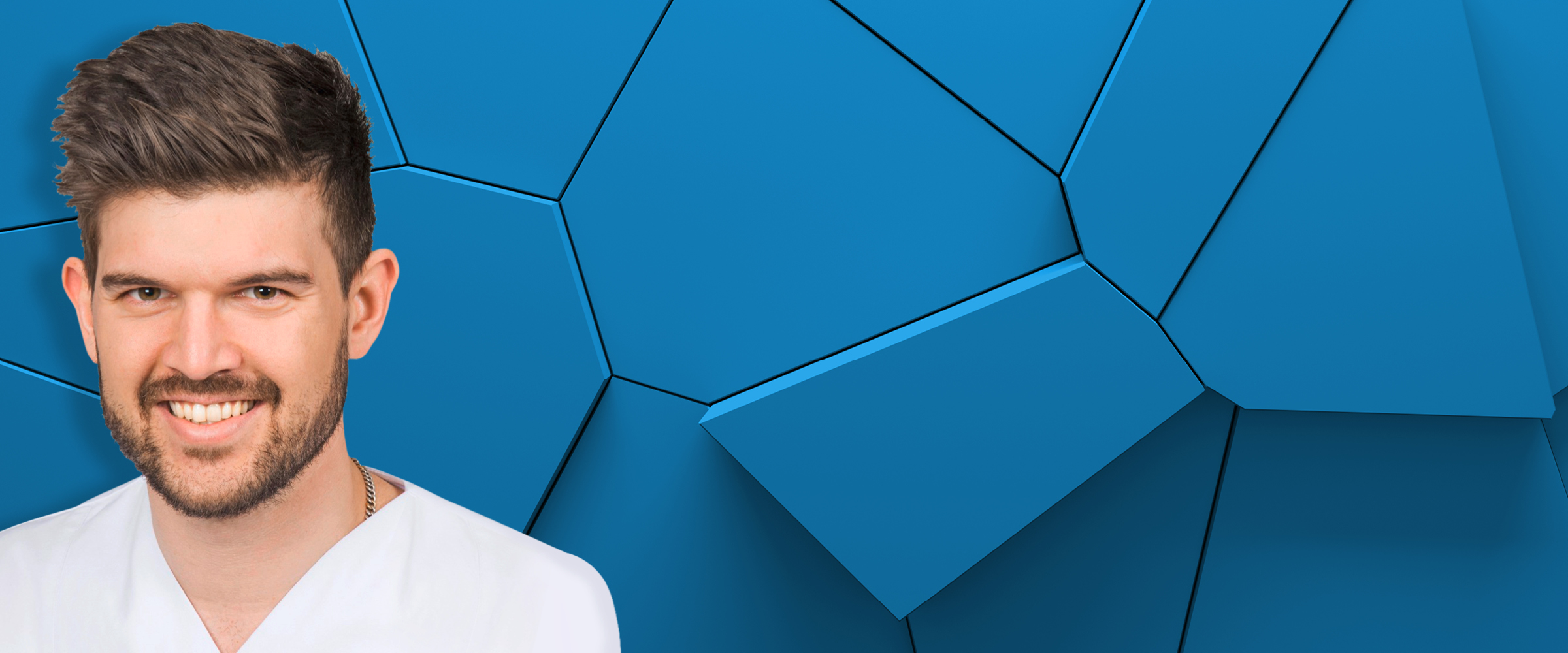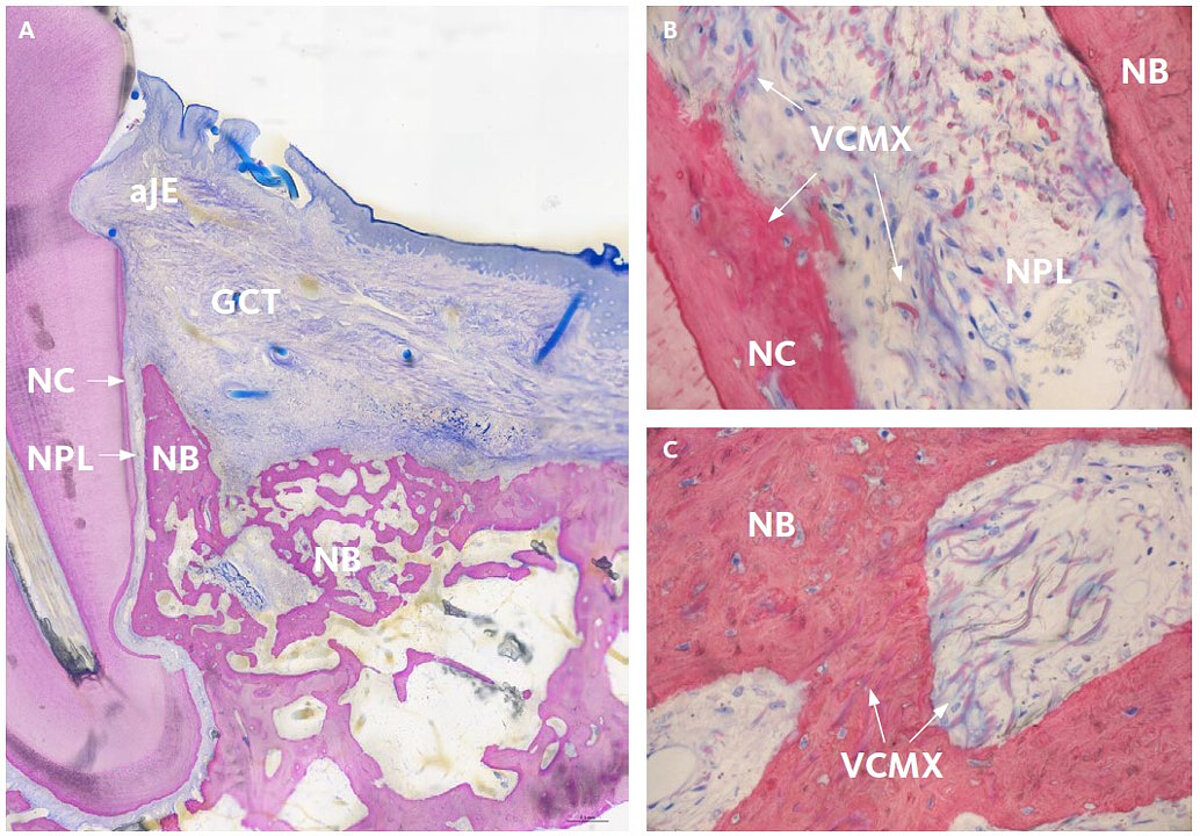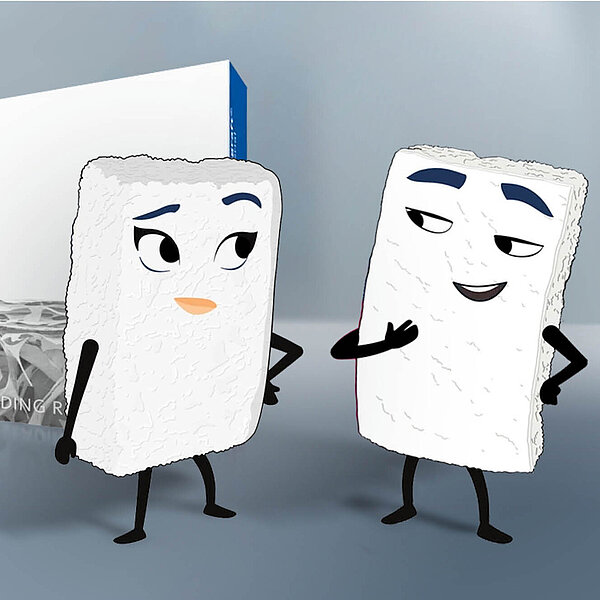
Periodontal regeneration with a collagen matrix
This histological study revealed the potential of Geistlich Fibro-Gide® to promote periodontal regeneration.
Due to its known biocompatibility and structural configuration (e.g., high porosity and interconnectivity), a porous, volume-stable collagen matrix (VCMX, Geistlich Fibro-Gide®) was preclinically tested in acute periodontal defects.1
After a healing period of twelve weeks, residual Geistlich Fibro-Gide® was still present and integrated in newly formed bone (Fig. 1A, B), periodontal ligament (Fig. 1A, C), cementum (Fig. 1C), and connective tissue (Fig. 1A).
| A Overview of a periodontal defect regenerated with the use of the volume-stable collagen matrix (VCMX) Geistlich Fibro-Gide®; apical end of the juntional epithelium (aJE). | B, C Integration of VCMX in new periodontal ligament (NPL), new bone (NB), gingival connective tissue (GCT), and new cenentum (NC).

New cementum and bone formation were significantly greater in the test group (with Geistlich Fibro-Gide®) than in the control group (without) (p = 0.009 and p = 0.037, respectively). This histological study revealed the potential of this specific collagen scaffold to promote periodontal regeneration. Nevertheless, additional preclinical and clinical trials are needed to establish the use of VCMX in periodontal regenerative surgery.
Reference
- Imber et al.: J Clin Periodontol 2021; 48(4): 560-69 (pre-clinical study)





